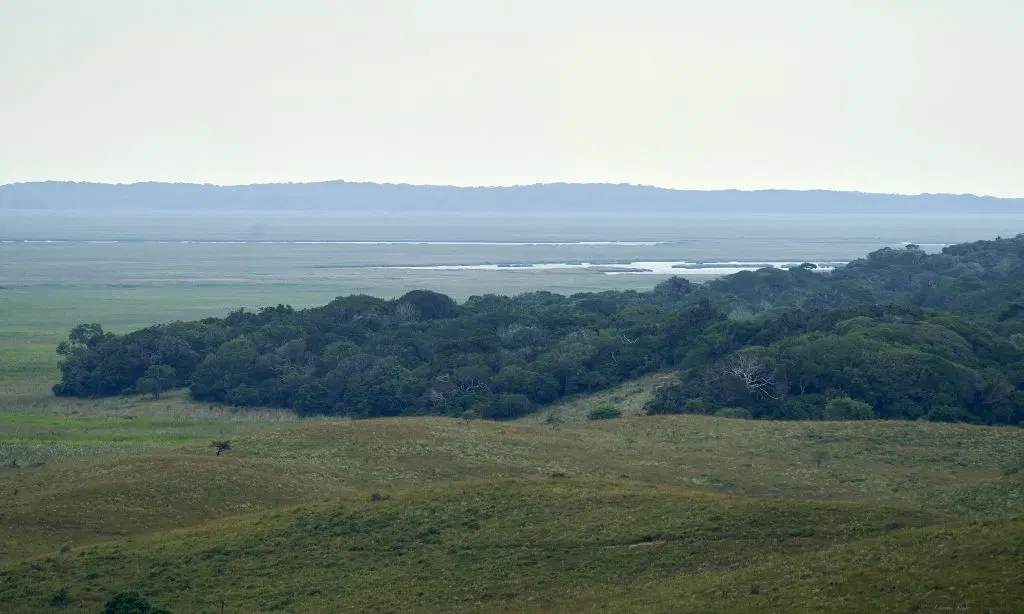For several years, ecological research has argued that climate often has no determining influence on the distribution of forests and savannas in tropical regions. However, an international research team led by Prof. Dr. Steven Higgins at the University of Bayreuth has now succeeded in proving that it depends mostly on climatic factors whether regions in Africa are covered by forest or savanna. The study, published in “Science“, thus confirms the dominant role of climate in the formation of global vegetation patterns.
The study resulted from a close collaboration between the Bayreuth plant ecologists and research partners in Norway and South Africa. “Our studies on the distribution of forests and savannas in Africa show a dominant influence of climate on vegetation. The findings therefore strengthen the assumption that scientifically well-founded forecasts relating to climate change are a reliable basis for correctly assessing imminent changes in ecosystems and vegetation – not only in Africa, but also in other regions of the world,” says first author Prof. Dr. Steven Higgins, Chair of Plant Ecology at the University of Bayreuth. He adds, “Climate research and plant ecology can jointly contribute to the development of appropriate measures in nature conservation and environmental protection, but also in agriculture and forestry, to adapt to the changes in the plant world that are already foreseeable today.”
At the same time, the study’s authors warn against measures that underestimate the influence of climate on vegetation. For example, efforts are currently underway to reforest savanna regions in Africa so that forest areas can sequester CO2 from the atmosphere. Underlying these climate change mitigation plans is the assumption – disproved by the new research – that forests and savannas are vegetation types that can occur under the same climatic conditions. “The assumption that the Earth’s natural carbon storage can be increased by large-scale conversion of African savannas to forests is misguided and even dangerous. Such afforestation would likely have little success, given that the climate in savanna regions does not support forests, but would damage the biodiversity of savanna ecosystems,” says Dr. Timo Conradi, co-author of the study, from the Plant Ecology research group.
Climate dominance: A novel model refutes the paradigm of alternative ecosystem states
The view that the occurrence of forests and savannas in Africa is not determined by specific climatic factors follows a paradigm that has gained increasing recognition in ecological research. It is based on the hypothesis that “alternative ecosystem states” (AES) exist in many regions of the world. These are not, or at least not primarily, caused by the climate. The hypothesis is based on the fact that internal feedback processes in ecosystems override and weaken the effects of climatic factors. In this context, the observation that forests and savannas are found in very similar climatic regions is used as evidence that vegetation is not determined by climate and to support the AES hypothesis.
Disproving this paradigm is the core of the study published in “Science“. The authors used a well-established model of plant growth and linked it to extensive data related to climate factors and the regional distribution of plant species in Africa. A method they developed, the “phytoclimatic transformation,” describes how different climatic factors favour or hinder the growth of plant species. The method can infer which plant species thrive under any possible combination of temperature, soil moisture, solar radiation and atmospheric CO2 concentration. In this way, a total of 678 sites in Africa were classified in terms of whether they are preferentially suited to the development of forests or savannas. Eighty-nine percent of the predictions made in this way agreed with the vegetation states that actually existed.
As the scientists were able to demonstrate, disagreement between predicted and existing vegetation states were not necessarily evidence of alternative ecosystem states. Rather, the disagreements could be attributed to a large extent to abiotic environmental factors. These include, above all, topographic features such as the structuring of the landscape by mountains and valleys, but also the composition of soils and microclimatic influences emanating, for example, from waterfalls or river floodplains.
The authors do not fundamentally question that alternative ecosystem states exist. “The AES concept is theoretically sound and opens up exciting research perspectives; moreover, the scientific literature contains a handful of good examples. In practice, however, it is very difficult to prove the existence of an AES. So we believe that alternative ecosystem states exist, but we need to find out how common they really are and better understand the conditions that favour their existence,” explains Prof. Dr. Steven Higgins.
Read the paper: Science
Article source: University of Bayreuth
Image: Boundary of savanna and forest in Africa. Credit: Lawrence Kruger.








